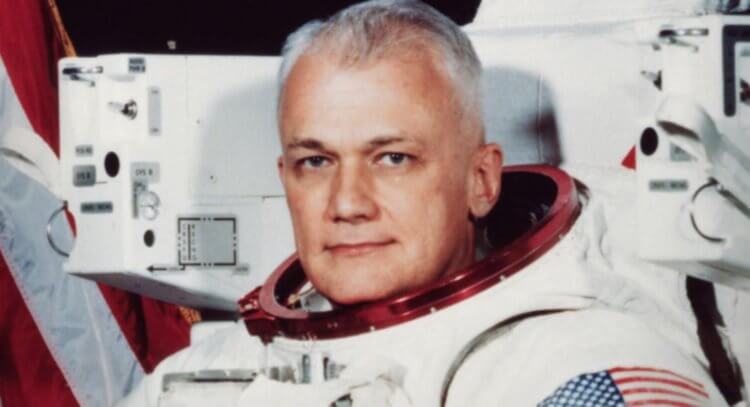When astronauts launch into space, they immediately enter the International Space Station (ISS). They go out into open space only occasionally to inspect or repair the station, as well as to conduct scientific experiments. In order not to fly off into the cosmic unknown, they are tied to the station using strong cables – if such a safety net did not exist, some astronauts would probably get lost in the vast expanses of space. But one day, American astronauts went into space without using insurance. It was a very risky mission during which humanity could lose a person in space. Fortunately, everything went well, and the astronauts were even able to take some of the most amazing photographs in history.

Astronaut Bruce McCandless in outer space. Photo source: NASA
Space Shuttle
The first manned spacewalk without insurance took place in February 1984. At that time, the International Space Station did not yet exist, and American astronauts used the Space Shuttle for flights.

The size of the Space Shuttle is amazing. Photo source: million-wallpapers.ru
As part of the February flight, the astronauts were tasked with launching two communications satellites: Westar 6 and Palapa B-2. Unfortunately, both devices had problems starting up and were lost. The ship's crew sadly sent a message back to Earth that they “couldn't find them.” On this day, the United States, in fact, lost 180 million dollars – that’s how much two satellites cost.
Jet pack for space flight
Fortunately, the mission went on more successfully. The mission required astronauts Bruce McCandless and Robert Stewart to take a risky step into outer space without using a safety rope. Instead, they used the then-new Manned Maneuvering Unit (MMU) jetpacks, which were filled with 5.9 kilograms of nitrogen, designed for six hours of operation. To move, they used a joystick controlled by their fingertips.

Astronaut Bruce McCandless. Photo source: NASA

Astronaut Robert Stewart with a Manned Maneuvering Unit (MMU) jetpack. Photo source: NASA
Read also:Space debris forces astronauts to abandon spacewalks
The first person to go into outer space without insurance was American astronaut Bruce McCandless. He took a step into the unknown on the morning of February 7 – he voiced his every move into the microphone of his headset. Later he recalled how scared he was at that moment. Ten years before this mission, Neil Armstrong took “a small step for man and a big step for humanity” by setting foot on the surface of the Moon. According to Bruce McCandless, for him it was not just a step, but “a damn big leap.”
Moving away from the Space Shuttle, he was facing the spacecraft – otherwise he could easily get lost. Instead of a huge number of stars, he saw only pitch darkness around him. Using a backpack, he was able to move 100 meters away from the spacecraft. At that time he was 300 kilometers above the Atlantic Ocean. Below him, he saw the rotating Earth and was even able to recognize Florida, where the Canaveral Spaceport is located.

Astronaut Bruce McCandless 100 meters from the Space Shuttle. Photo source: NASA
According to the book Challenger: A True Story of Heroism and Disaster on the Edge of Space, Bruce McCandless was even able to do a few stunts in outer space. But he could not feel himself in complete solitude and maximum distance from all civilization, because the crackling noise was constantly heard in his headphones.
One of the other Space Shuttle crew members pointed his camera lens at his colleague and took one of the most stunning photographs in history. It depicts an astronaut in a spacesuit, who is in the middle of outer space and is in no way connected to either the spacecraft or the Earth.
Astronaut Robert Stewart walked into outer space the next day, February 8, 1984. His sortie also went without any problems, and in total both astronauts spent 5 hours 55 minutes in space.
Read also:What the Earth looks like from space – you haven’t seen these photos yet seen
The very first man in outer space
NASA astronauts made their first spacewalk without insurance. In general, the first step into outer space was taken by the Soviet cosmonaut Alexei Leonov – this happened on March 18, 1965. He went into space while tied to the spacecraft with a 4.8-meter cable

Soviet cosmonaut Alexei Leonov became the first person to walk into outer space. Image source: cultinfo.ru
Be sure to subscribe to our Zen channel. This way you will learn a lot of new things every day!
During the mission, he encountered a number of deadly problems. For example, when he wanted to return to the spaceship, his spacesuit became greatly inflated and a non-Soviet hero could enter the hatch. You can read more about this story in our article “Not only Yuri Gagarin: domestic cosmonauts who accomplished feats in space.”